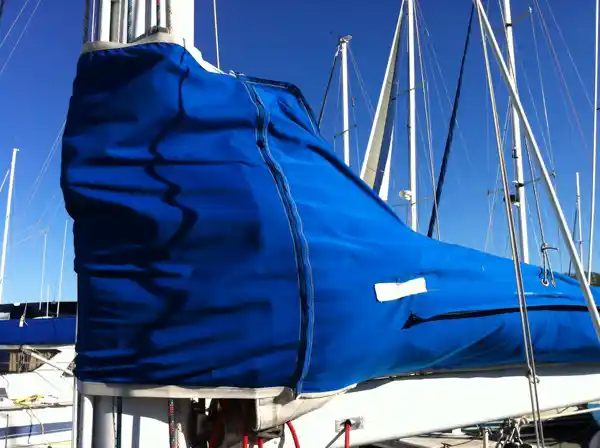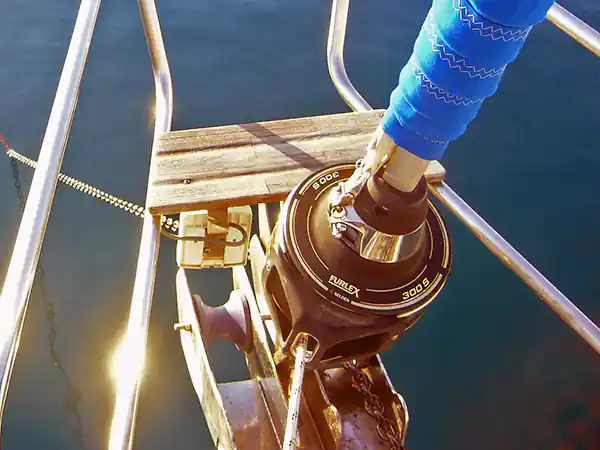How to make your sails last longer?
Did you know that the average lifespan of a sail is between 3 and 6 years? After that, they become less effective: distortion degrades their performance.
Are your sails losing their shape? Is your boat losing speed and heeling more? Do you want to keep your sails as long as possible and maintain their performance level? Do you want to avoid having to buy a new set of sails too soon?
Here are a few tips to help you care for your sails over time. Thanks to these guidelines, you’ll be able to keep your sails for a few more years.
Preparing, securing and protecting your sail
Today, most sails are made from Dacron – and spinnakers are made from Nylon. Both materials are derived from petroleum. Extending the life of your sails will obviously reduce your costs. But you’ll also be reducing the carbon footprint associated with their manufacturing. So it’s important to look after your sails. RegattaRace involving boats, most often sailboats. More sails may be made from more exotic fibres, but the principle is the same.
To avoid premature wear and tear, you can prepare and protect your sails before use. You can check several areas of your sails to make sure they are in good condition: the straps and eyelets, the batten pockets, the leech and foot lines, the seams and the reinforcements. These are areas of the sail that are likely to deteriorate over time. We therefore advise you to check their condition regularly. This will prevent minor wear turning into major damage.
In addition, to avoid chafe on your sails, you can install protection either on the sails themselves or on objects likely to wear them down. A few patches of insignia fabric will prevent sail abrasion on cleats, turnbuckles or spreaders. There are also protective leather covers that can be fitted to your spreaders. At a minimum, broken pins and rings should be covered with standard or self-vulcanising adhesive tape. Finally, if you specify it when ordering your sail, reinforcements can be fitted to areas that are sensitive to chafe. With this type of protection, you will ensure your sails will last even longer.

Taking care of your sails on every trip
The next step is to take care of your sails during and after each outing. There are three main causes of sail wear and tear: flapping, salt and sun. While out sailing, pay particular attention to how you use your sails to prevent them from flapping.
Being particularly reactive and efficient when tacking can avoid excessive damage to the genoa and other headsails. The smoother and quicker the manoeuvre, the less the sails will suffer. The same applies to reefing and other sail reductions. This is also the case when furling and unfurling a furling sail. It should be noted that it is perfectly possible to furl and unfurl a headsail downwind rather than into the wind, which considerably reduces flapping time. Finally, when there’s no wind, avoid hoisting the mainsail, which is likely to suffer when bobbing about.
But the most serious damage to your sails can occur outside these manoeuvring phases. Avoid at all costs leaving your sails incorrectly trimmed for any amount of time! A luffing genoa will suffer far more in twenty minutes than during a hundred tacking manoeuvres. So focus on trimming your sails right: wear and damage to your sails will appear much later.

Caring for your sail after sailing
When returning from your sailing trip, there are a few things you can do to prolong the life of your sails. Firstly, if your sails remain on their furler, avoid leaving them under constant tension. For example, you can slacken the halyards once you arrive in port.
What’s more, the fibre in your sail is fragile and can deteriorate over time. To avoid this problem, when you return to port, it’s best to carefully fold your sail. Be careful not to always fold your sails in the same way. This would compress the fibre and crease the sail.
Finally, to protect them from the sun, do invest in suitable covers if the sail is not removed and stored in a bag. This is particularly critical in the tropics, but that doesn’t mean that the sun in temperate latitudes is harmless. A furling genoa must have an anti-UV strip or a solidly lashed cover. For the mainsail, the modern protection solution is the lazy-bag. But when it comes to protection against ultraviolet rays and bad weather, a classic cover will do just as well.

Cleaning your sails
To prevent salt from damaging your sails, it’s best to wash them thoroughly to make them last longer. You can start by rinsing them with fresh water to dissolve the salt from the sails. You can also clean your sails with soap and a brush, but proceed gently to avoid damaging the fabric. If you want to remove a persistent stain, brush gently with a suitable product, such as oxalic acid.
You then have several options for drying your sails. You can leave them to dry in the riggingAll the spars (masts, booms, yards), cables and ropes needed to hold and maneuver the sails. More (or even on the water!). Or you can dry them flat. Make sure that the sail is completely dry before you fold it up.

Repairing your sail
In the event of a small tear, you can repair your sails yourself. If you detect a minor rip in your sail, you can prevent it from deteriorating by applying a patch. Self-adhesive fabrics can temporarily contain the problem. To apply your patch, clean and rinse the damaged area to remove salt and dirt. Then wait until the fabric is completely dry. Finally, apply a patch to each side of the sail, preferably in different sizes. Each patch should completely cover the tear or snag.
If you have a repair kit, with sail thread and a few needles, you can make a repair that will last longer. This can be as simple as restitching a worn seam. But to repair a small tear, you can also stitch around the patch to ensure it stays on. Or you could even make a herringbone stitch to repair the tear itself (we’ll come back to the herringbone stitch soon). If you decide to do all three of these (herringbone stitch, patching, and reinforcing by stitching around the patches), your repair will last a long time. However, it is advisable to turn to a sail loft. A professional will repair your sail in a more efficient and more durable manner.
Long live your sails!
Now your sails should last longer. To avoid premature wear and tear on your sails, start by reinforcing the areas that are sensitive to chafe and cover objects that can damage the sail. Then, during each trip, pay attention to how you use your sails to avoid flapping. Then, after each sailing session, stow and protect your sails. And when you get the chance, remember to wash and dry them to remove the salt. Finally, you can repair a small tear or snag yourself. But in the long term, you’ll need to have a proper repair carried out by a sailmaker. So, how long will your sails last?
